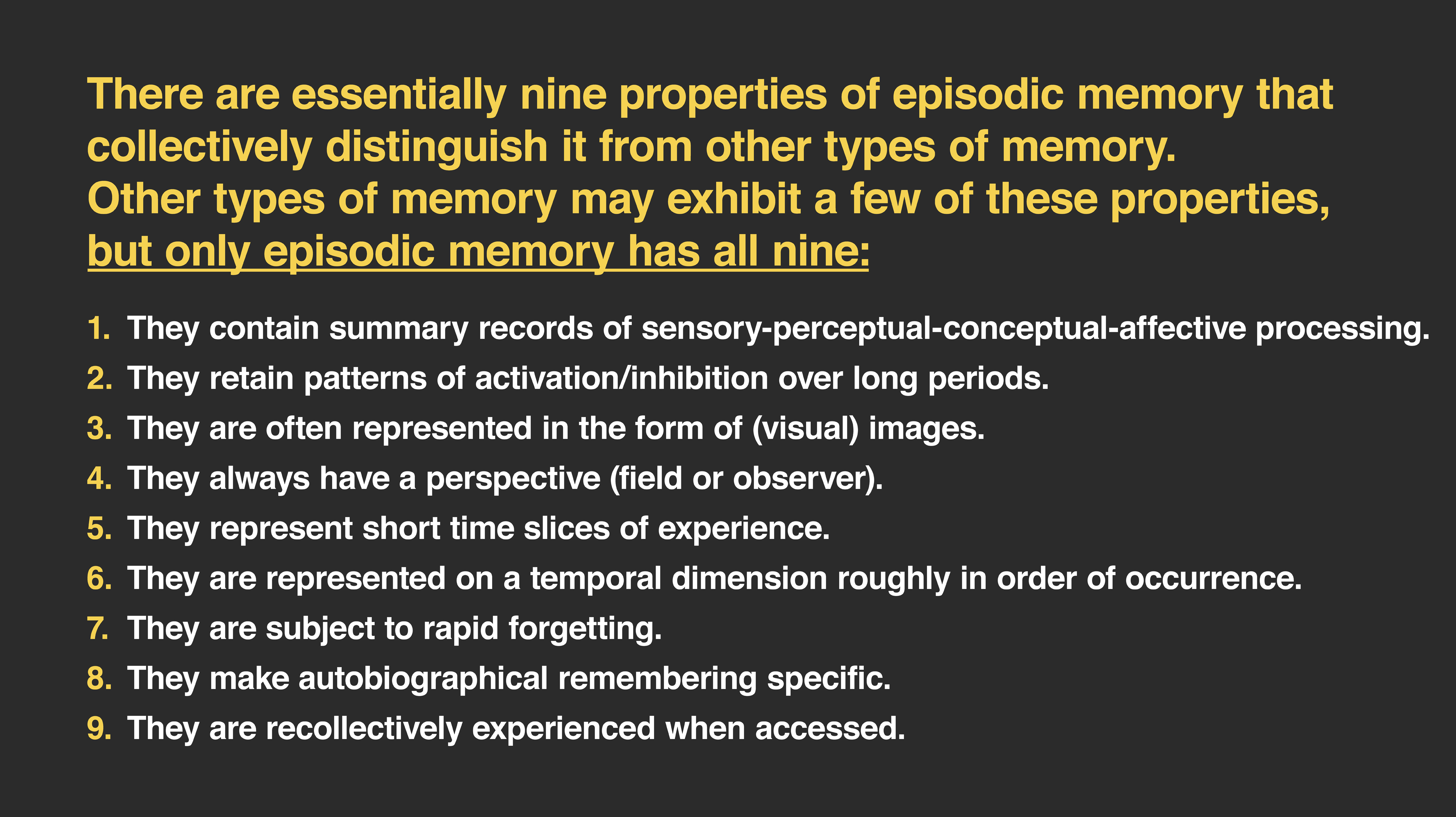Memory
Note to students: The best preparation for taking the reading quiz is to pay close attention to the key terms as you read. Each question in the question banks is directly linked to these key terms and phrases.
Chapter Focus Question:
Where and how does the human brain store memories, and how are memories classified?
- Amnesia
- Anterograde/retrograde amnesia
- Clive Wearing case study
- Implicit/explicit memory
- Procedural/declarative memory
- Tower of Hanoi task
- Iconic/echoic memory
- H.M. case study
- Hippocampus and memory
- Sensory memory systems
Section Focus Question:
What happens when an individual cannot retrieve memories, and how does this condition impair day-to-day functions?
Key Terms:
Memory is a record of our previous experiences. Much of what psychologists know about memory comes from studies of neuropsychological patients whose memory has been impaired, a condition known as amnesia. Based on different kinds of amnesia, researchers in the 20th century began to break down the notion of memory into different memory systems, distinguished by the kind of information they record, their time course, and their location in the brain.
The experience of one notable amnesic, Clive Wearing, illustrates how central memory is in our mental lives. Wearing was a successful choral conductor who, in 1985, contracted viral encephalitis. The virus damaged his hippocampus, an ancient part of the brain located below the cerebral cortex, known to be critical for long-term memory. Since then, Wearing has been unable to form new memories that last more than a few seconds, a condition called anterograde amnesia, and he is also unable to access information about his personal past, called retrograde amnesia.
As a result, Wearing is trapped in a perpetual present. Many times a day he has the experience of becoming conscious “for the first time” – as if he were awakening from a comatose state. Each time his wife enters a room he greets her tearfully, as if he were reuniting with her after years of being apart. If she leaves the room and returns a few minutes later, Wearing once again believes they have been separated for years, and the tearful reunion is repeated. Because Wearing is unable to form new long-term memories, he cannot build new interpersonal relationships. Because he is unable to access old memories reliably, he cannot maintain his existing relationships. Without long-term memory Wearing is isolated, reporting that his life as an amnesic is “exactly like death.”
While Wearing is focusing his attention on a person or a task, however, he is able to behave relatively normally. He can carry on coherent conversations on many topics, but forgets having had them as soon as he shifts his attention. He can play piano and even conduct a choir so long as the musical score is in front of him, even though he cannot recall having received any musical education. Wearing can navigate his apartment even though he moved there after his brain injury, but he cannot describe its layout. The abilities that Wearing retains, therefore, are as informative about the nature of memory as the abilities he has lost, revealing the fault lines along which a healthy, apparently seamless memory breaks apart.
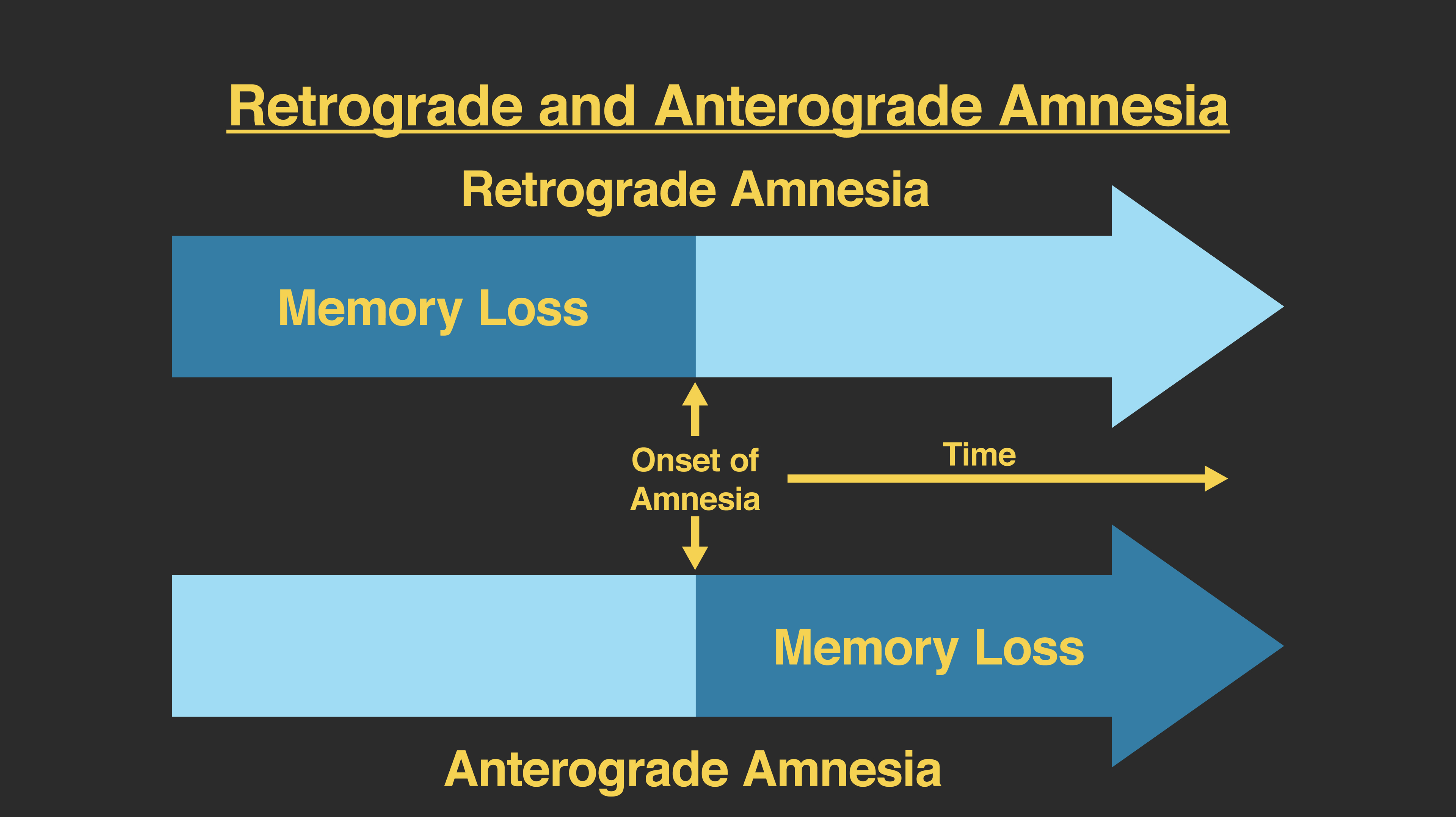
Implicit vs. explicit memory
Clive Wearing can make coffee (a process he learned before his brain injury). He can reach for the cups and spoons in their proper locations in his apartment’s kitchen (a layout he learned after his injury), but he cannot tell you where these objects are located when he’s not reaching for them. His ability to perform these actions, even if he cannot describe them, illustrates the distinction between two basic memory systems: implicit (unconscious) and explicit (conscious) memory.
The most commonly studied form of implicit memory is procedural memory, which underlies skills like riding a bike, playing violin, or spinning a dreidel. Your body learns how to do these things, through practice, but not in the same way you can learn a list of words for a vocabulary test by practicing with flashcards. Everything you need to know to ace a vocabulary test can be written down and recited aloud: You can make your knowledge of the words’ definitions explicit. Memories that can be stated in words are called declarative memories. But it is impossible to explicitly describe everything you need to know to play the violin, or to learn how to play well from a verbal description. The only way to learn to play an instrument is by playing it, and the most important aspects of an expert player’s knowledge will always remain indescribable.
A classic demonstration of the dissociation between procedural memory and declarative memory comes from testing hippocampal amnesics with the Tower of Hanoi task. In this task, the participant sees three vertical rods, one of which has a set of discs (with holes in the middle) stacked on it. The objective is to move all of the discs from the first rod to the third rod, moving them one at a time, according to a set of rules (e.g., larger discs cannot be placed on top of smaller discs). The more people practice the task, the faster they can generally solve it, using fewer moves of the discs. This was true for a neuropsychological patient known as H.M., who developed anterograde amnesia after his left- and right-hippocampi were surgically removed (to reduce seizures). When H.M. performed the Tower of Hanoi task over series of days he gradually learned to solve the puzzle faster, even though each day he thought he was doing the task for the first time.
H.M.’s procedural memory for how to solve the Tower of Hanoi improved, but this knowledge was implicit; he had no explicit memory of having done the task repeatedly. On the basis of this pattern, researchers drew two conclusions. First, the implicit and explicit memory systems are at least partially separate. Second, whereas explicit knowledge of our personal experiences depends on the hippocampus, implicit learning from those experiences does not. Further research showed that other ancient brain structures, also located below the cerebral cortex, are important for procedural learning, including the basal ganglia and the cerebellum: two structures that enable voluntary motor control.
Short-term explicit memory
Although Clive Wearing and H.M. had severely compromised long-term explicit memory, their short-term memory was relatively unaffected. Other patients, with damage to the cerebral cortex, have shown preserved long-term memory but impaired short-term memory, indicating that our long- and short-term memory systems are at least partly separate. There are several forms of short-term memory, which differ terms of how long they last, what kind of information they hold, and whether they are under conscious control.
Sensory memory systems
Iconic memory is a fleeting kind of memory that allows us to maintain visual image of a complex scene for less than a second. If we move a glowing ember through a darkened space it appears to be followed by a trail of light. This disappearing trail is our iconic memory trace of the ember’s previous locations. The auditory counterpart to iconic memory is echoic memory, which can hold snippets of sound for up to three or four seconds, long enough to reinterpret a poorly understood phrase of speech, for example.
Both iconic and echoic memory are believed to help people make sense of their sensory experiences. They hold sensory information in a buffer long enough for this information to be integrated with other incoming information, or with information in long-term memory. Although we may be briefly conscious of our iconic or echoic memories, we are not able to prolong or manipulate these memories through conscious effort.
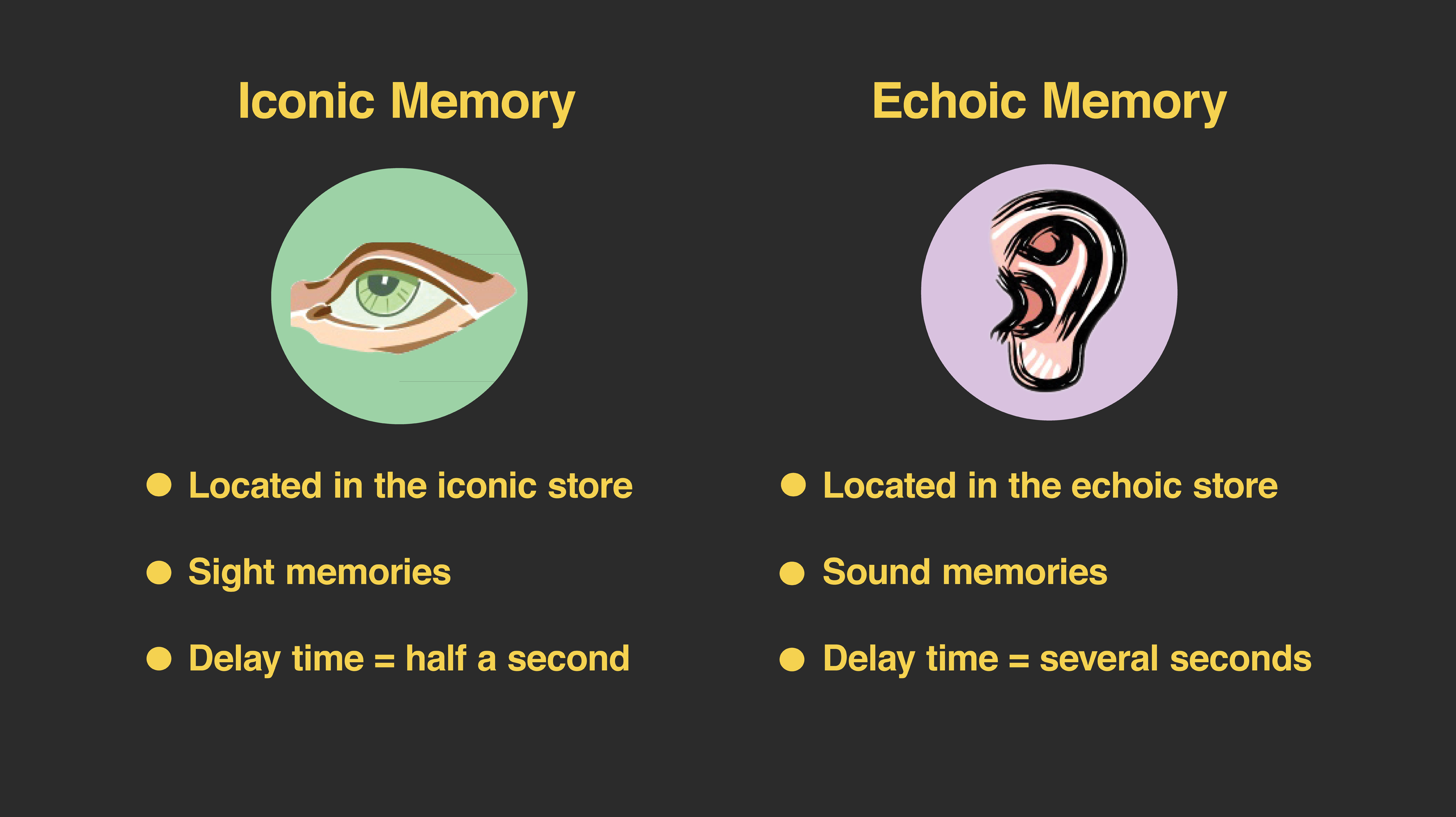
- Working memory systems
- Central executive mechanism
- Subvocal rehearsal
- Phonological loop
- Auditory information
- Articulatory information
- Visual information
- Visuo-spatial sketchpad
- Explicit long-term memory
Section Focus Question:
How does the brain integrate what individuals hear, say, and see in order for them to navigate through the events of the day?
Key Terms:
Working memory systems
By contrast with sensory memory systems, working memory systems are under conscious control, and information can be maintained in working memory for as long as you are devoting attention to it. Working memory has multiple separable components that are controlled by a central executive mechanism that directs attention. The two main components of working memory are described below.
Phonological loop
Suppose you need to remember a string of numbers, or a list of words: cat, mirror, steak, shoe, rake, and elevator. How would you do it? Most people would naturally repeat the words silently in their mind’s ear, a process called subvocal rehearsal. This process relies on the phonological loop is the working memory system that allows us to retain verbal information in memory, so long as we continue to rehearse it. The phonological loop can only retain a limited number of words: about seven. If we were to add ten more arbitrarily chosen words to the list above, it would be impossible to remember them all.
The word “phonological” refers to the forms of the words being held in memory. When we hear words their forms are auditory, but when we speak words their forms are articulatory: each word corresponds not to a pattern of sounds but rather to a pattern of motor movements that we make with the articulators of the vocal tract (e.g., our lips and tongue). Research has shown that the memory traces in the phonological loop are composed of both auditory and articulatory information.
Visuo-spatial sketchpad
Visual information is maintained in a separate working memory system called the visuo-spatial sketchpad. Imagine seeing a four-by-four grid with 16 empty squares. Suppose dots are placed in three of those squares. How would you remember which squares have dots? Most people report forming an image in their mind’s eye, which “shows” them where the dots are located, so long as they devote attention to it. The mental image is not as detailed as a photograph, but rather a rough sketch of the visuo-spatial information in a scene. In addition to spatial information, this working memory system can maintain other kinds of information, such as color. Like the phonological loop, the visuo-spatial sketchpad has strict capacity limits: three or four items.
When attention is taken away from information in working memory, the memory quickly disappears. It is possible, however, that at least some of the information will have been transferred into long-term memory.
Long-term explicit memory
Amnesics like Clive Wearing and H.M. may not be able to remember what color house they grew up in, or the name of their hometown, but they have no trouble understanding the idea of a house, or a town. This dissociation suggests that knowledge of our personal past and general knowledge of the world are stored in different kinds of explicit long-term memory.
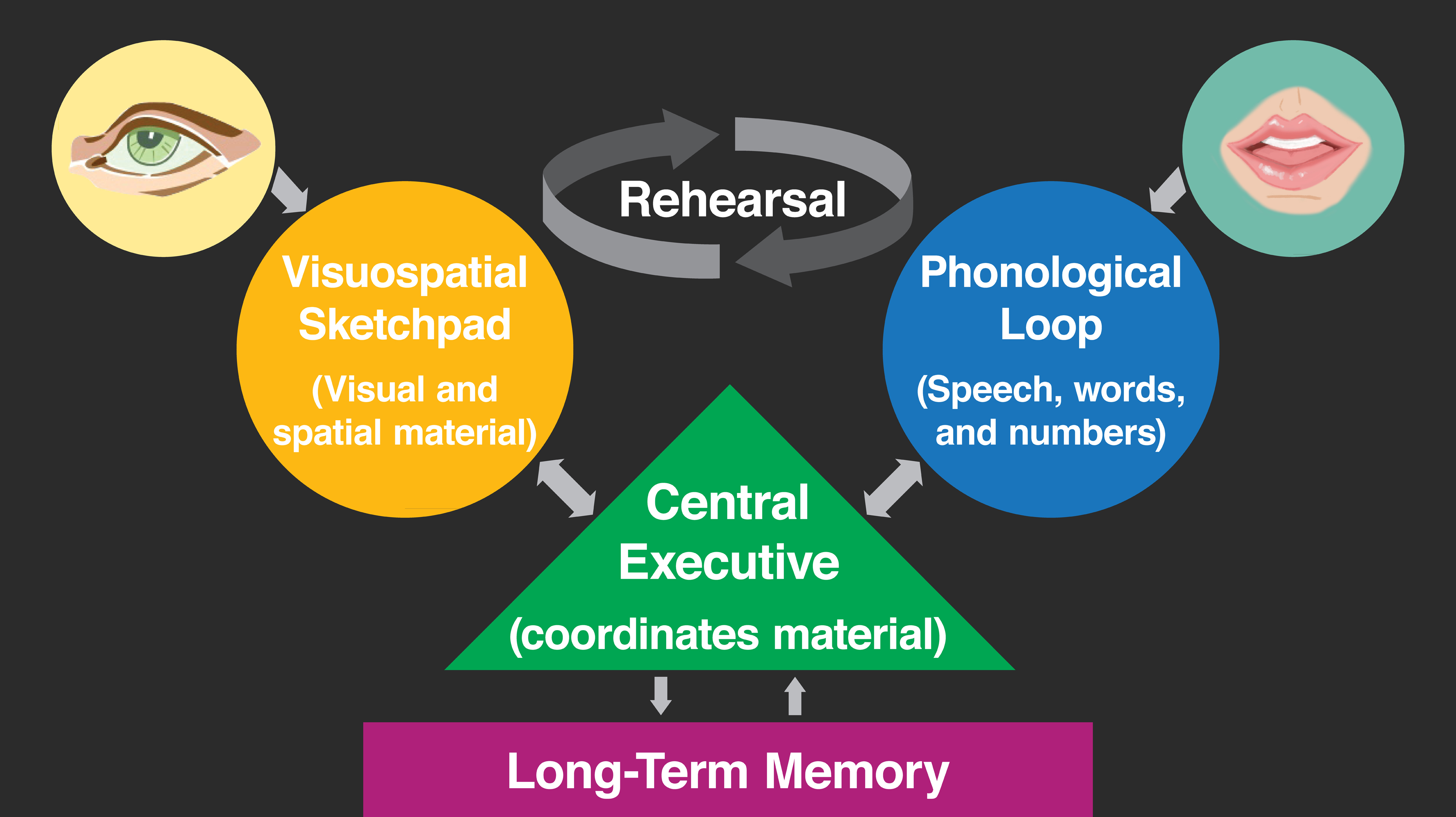
- Semantic memory
- Random access memory (RAM)
- Context in memory
- Organization of memory
- Cerebral cortex and supporting structures
- Episodic memory
- Consciousness
- Properties of episodic memory
Section Focus Question:
How do semantic and episodic memories differ, and what makes episodic memory uniquely human?
Key Terms:
Semantic memory
Facts like the conventional meanings of words, historical events, or cultural norms are stored in semantic memory. Also called world knowledge, our store of semantic memory is generally shared between members of our community (e.g., the community of English-speaking Western adults). Although people know that they know the information stored in semantic memory they typically don’t know how this knowledge was acquired: We don’t remember the exact moment at which we learned most of what we know.
Hundreds of studies have explored how information in semantic memory is organized and retrieved. Most digital computers use random access memory (RAM): When the user enters a symbol, the computer retrieves whatever piece of information to which that symbol has been randomly assigned. The location of the information is independent of its content: Information about dogs in your computer’s memory may not be located near information about other animals, and retrieving information about dogs will not influence how efficiently the computer can then retrieve information about cats.
By contrast with RAM, the organization of semantic memory is far from random. Semantic memories are organized in networks that reflect similarity in content, and how often different memories tend to get accessed together. Whereas entries for CAT and DOG in a computer’s memory are distinct from one another, in semantic memory cat- and dog-related information is overlapping because cats and dogs share many features (friendly, furry, kept as pets, etc.), and because information about cats and dogs is often accessed at similar times, in similar contexts. Activating information about cats in semantic memory will also activate some of the stored information we have about dogs. This organization can be revealed by reaction times in simple experiments: Subjects are faster to read the word “dog” when it has been preceded by a related word like “cat” than when it has been preceded by an unrelated word like “toaster.”
The location of semantic memories in the brain is also far from random. Although the hippocampus and surrounding subcortical structures are necessary for forming new semantic memories, these memories are then stored in the cerebral cortex, with related information occupying neighboring regions of the cortex: knowledge about animals is stored in one region, knowledge of tools in another, etc. This pattern, which has been shown in brain imaging studies, was first discovered in patients with damage to limited areas of the cortex who lost the ability to reason about particular semantic categories (e.g., living vs. nonliving things). In a few cases, these semantic impairments have been surprisingly fine-grained, for example, affecting knowledge of fruits vs. vegetables, thus revealing the granularity of the categories in our semantic memory.
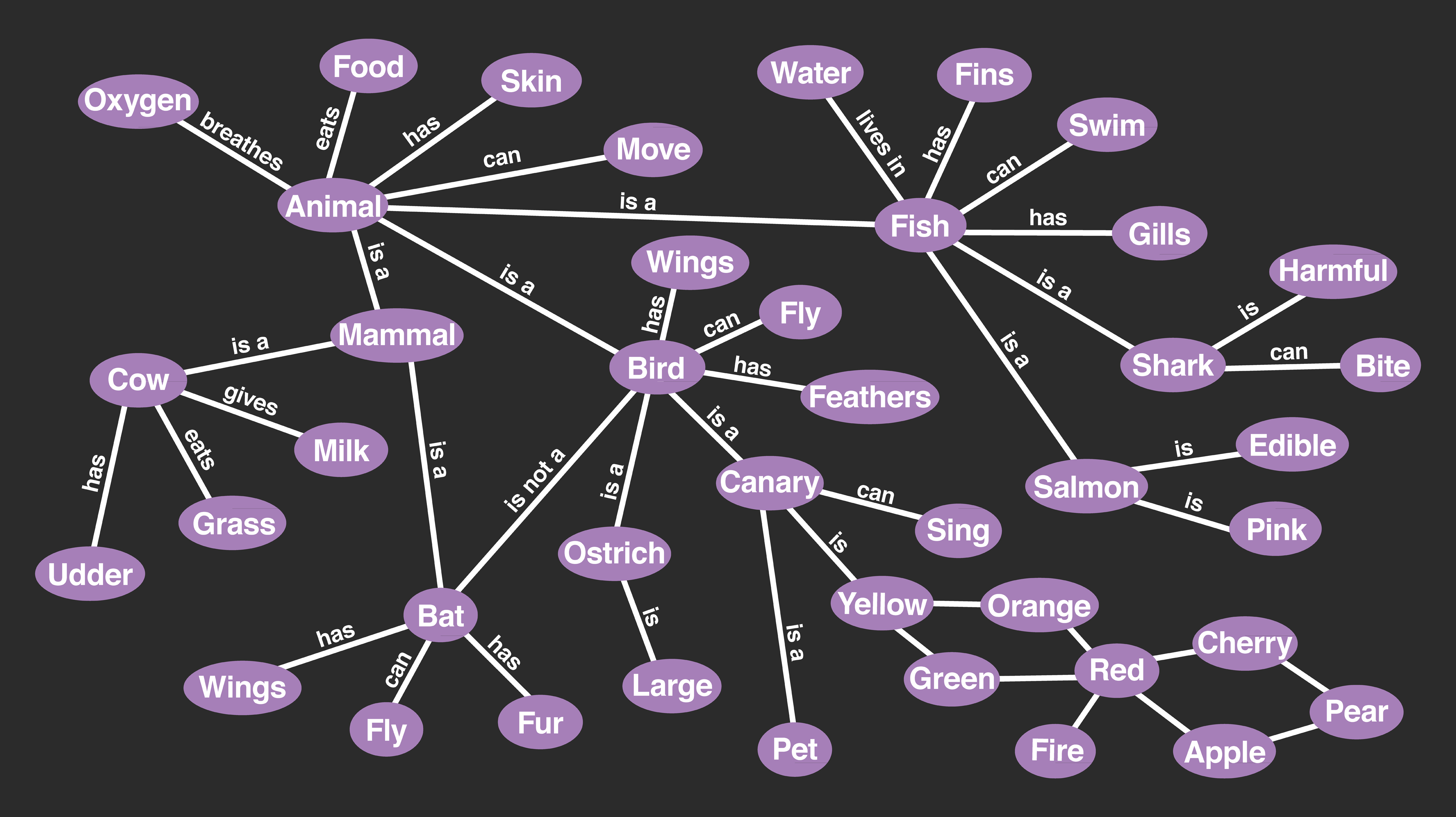
Episodic memory
If semantic memory is the mental encyclopedia, episodic memory is the mental scrapbook. Episodic memory stores autobiographical information, and allows for the conscious recollection of events you have experienced personally. The fact that children like to have kittens as pets is part of semantic knowledge. Your recollection of picking out your first kitten at the pet shop is part of episodic memory (this is precisely the kind of memory Clive Wearing and H.M. became unable to form).
Episodic memory is sometimes called “mental time travel.” A true episodic memory must specify not only what happened, but also where and when it happened, and importantly, you must be conscious of having experienced the episode. Researchers debate whether nonhuman animals have episodic memories. There is evidence that other animals can retrieve information about where and when an event occurred, but it is unclear whether they are transporting themselves mentally to an earlier time and consciously re-experiencing some aspects of the event.
Most of our evidence for humans’ episodic memory comes from conscious introspection and verbal self-report. Determining whether episodic memory is a uniquely human capacity may require cracking unsolved mysteries like whether animals have consciousness, and how to translate their thoughts into words.
